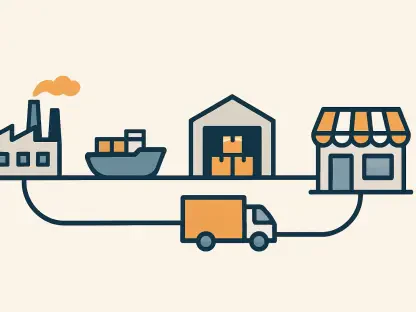In the realm of big data, businesses increasingly employ analytics to transform strategies and enhance overall performance. Predictive and prescriptive analytics are two pivotal tools used to navigate the complexities of data-driven decision-making. Their names may sound similar, yet each serves distinct purposes depending on organizational needs and objectives. Predictive analytics involves analyzing historical data to forecast possible future outcomes, gearing decisions toward expected trends. Conversely, prescriptive analytics goes beyond predictions, offering actionable strategies based on those forecasts, allowing management to optimize choices amidst complex scenarios. Choosing between these approaches requires understanding both their capabilities and the specific requirements of a business’s decision-making processes.
Understanding Predictive Analytics
Predictive analytics focuses on uncovering patterns within historical data to make educated guesses about future occurrences. Its methodology involves dissecting existing data, identifying correlations, and interpreting trends to answer the pivotal question: “What might happen next?” Companies leverage predictive techniques in diverse sectors. For instance, e-commerce platforms use insights to gauge customer churn likelihood, while healthcare providers assess patient readmission probabilities. Such foresight aids organizations in preparing for potential scenarios, transforming uncertainties into informed expectations. Though predictive analytics is adept at forecasting, it doesn’t provide comprehensive strategies for addressing anticipated challenges. The scope is limited to probabilities and potential courses, lacking directives for immediate action or solution implementation. Despite these limitations, predictive models built on solid data and methods offer reliable forecasts essential for strategic planning. Recognizing the need to move beyond straightforward predictions, businesses often integrate predictive insights with other analytical tools to generate a more thorough understanding of upcoming prospects and challenges.
Navigating Prescriptive Analytics
Prescriptive analytics takes the predictive approach a step further by articulating strategies informed by forecasts. While predictive tools address what might happen, prescriptive analytics delves into what should occur, utilizing machine learning, optimization models, and simulations to devise effective solutions. Business sectors like logistics, supply chain management, and finance benefit significantly from prescriptive analytics due to their rapidly changing environments and complex decision-making demands. For example, when supply chain disruptions loom, predictive analytics might forecast delivery delays, whereas prescriptive analytics suggests alternative routes or procurement schedules to mitigate the impact. The strength of prescriptive tools lies in their ability to adapt to evolving conditions, providing actionable insights tailored to specific scenarios. However, these tools are complex and necessitate high-quality data coupled with a robust understanding of organizational processes. Businesses must ensure their analytics maturity is sufficient to embrace prescriptive analytics, as a lack thereof can hinder effective application. As organizations grow more sophisticated in their analytical endeavors, prescriptive analytics becomes indispensable for crafting responsive strategies.
Determining Value and Application
The decision to prioritize either predictive or prescriptive analytics largely hinges on the organization’s analytics maturity and the decision types it supports. Predictive analytics excels in environments where data integration and pattern recognition are emerging priorities. It helps identify trends, establish benchmarks, and refine forecasting accuracy, steering smarter choices across departments. Companies in transition toward substantial analytics frameworks find predictive analytics suitable for laying foundational insights. Conversely, mature organizations aiming for automation and optimization at scale might employ prescriptive analytics to support swift, critical decision-making. In sectors with time-sensitive conditions like finance, logistics, and healthcare, prescriptive analytics reduces response times and bolsters consistency in decision approaches. Aligning analytical strategies with objectives helps realize their potential, tailoring solutions to industry demands. Predictive models prove valuable for predicting customer behaviors and streamlining processes, while prescriptive systems handle complex and rapid decision requirements. Many businesses adopt a hybrid approach, benefiting from predictive insights as a foundation for prescriptive recommendations, optimizing strategy formulation across various operational areas.
Integration and Human Element
Despite the transformative capabilities of advanced analytics, the human element in decision-making remains crucial. Analytical tools must augment, not replace, human judgment, facilitating enhanced decision processes rather than supplanting them. Practical implementation involves understanding insights, managing organizational changes, and evaluating trade-offs with human discernment, ensuring analytics complement nuanced thought processes. Without human integration, even advanced systems may fall short. Effective communication and training ensure teams grasp and utilize tools effectively, fostering integration within daily operations. Considering analytics as a supportive element ensures decision-makers can leverage insights effectively to optimize performance outcomes. Critical thinking, interpretation, and contextual understanding remain vital, as analytical platforms serve to guide choices rather than dictate them. Businesses should view analytics as enablers within thought processes, complemented by expertise, to achieve their true potential.
Perspectives on Analytics
Predictive analytics delves into historical data to identify patterns, enabling educated guesses about future events. The process involves breaking down current data, spotting correlations, and interpreting trends to address the key question: “What might happen next?” Various industries tap into predictive techniques. For example, e-commerce platforms use insights to predict customer churn, while healthcare sectors estimate patient readmission probabilities. These predictive insights help organizations prepare for potential outcomes, turning uncertainties into informed expectations. While predictive analytics excels at forecasting, it doesn’t offer detailed strategies for overcoming expected challenges. Its focus is on probabilities and potential directions rather than immediate actions or solutions. Despite constraints, predictive models built on robust data and methodologies generate reliable forecasts crucial for strategic planning. Recognizing the need for depth beyond straightforward predictions, businesses frequently combine predictive analytics with other tools to gain a more comprehensive view of future opportunities and obstacles.









